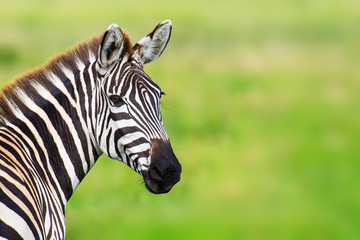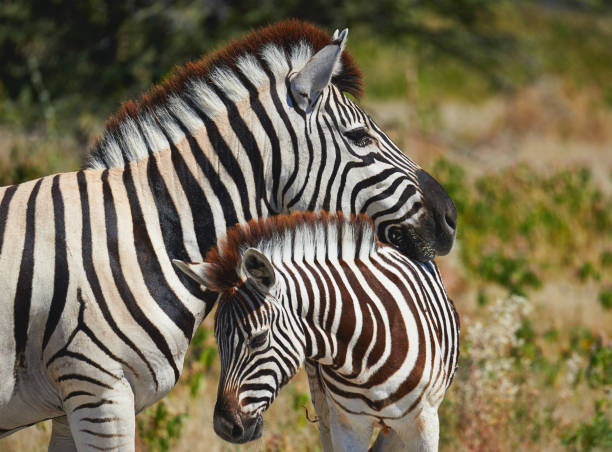Table of Contents
Scientific Classification
| Kingdom | Animalia |
| Phylum | Chordata |
| Class | Mammalia |
| Order | Perissodactyla |
| Family | Equidae |
| Genus | Equus |
| Species | Equus quagga, Equus zebra, Equus grevyi |
| Scientific Name | Equus spp. |
Description
Zebras are well-known mammals from Africa, easily recognized by their distinctive black-and-white striped coats. These stripes serve a dual purpose: they help zebras camouflage in their environment and allow them to recognize one another within their herds. Zebras possess a robust, stocky physique, long legs, and a tufted tail, with their manes standing upright. Their large ears enable them to detect predators from a distance. Each zebra’s stripe pattern is unique, similar to a human fingerprint.
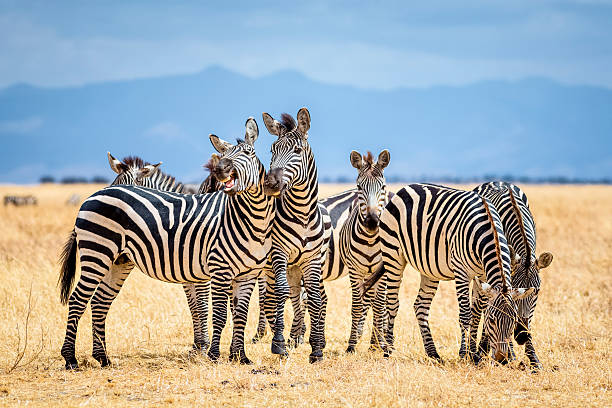
Distribution
Zebras are originally from Africa, where they primarily inhabit savannas, grasslands, and mountainous areas. Their distribution varies by species:
Plains Zebra (Equus quagga): These zebras are found in eastern and southern Africa, ranging from Kenya to South Africa.
Mountain Zebra (Equus zebra): This species resides in the rugged landscapes of Namibia and South Africa.
Grévy’s Zebra (Equus grevyi) is located in Ethiopia and northern Kenya, primarily living in semi-arid grasslands.
Habitat
Zebras are typically found in open environments like savannas, woodlands, and mountainous areas. They flourish in regions that provide fresh water and plenty of grazing opportunities. While plains zebras favor expansive grasslands, mountain zebras are more suited to rocky terrains with limited vegetation.
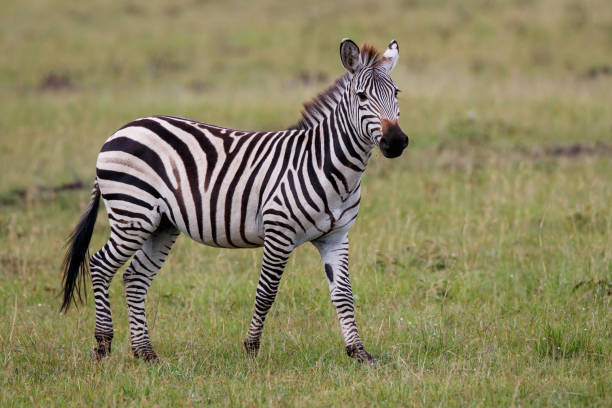
Diet
Zebras are herbivores that mainly eat grasses. Their strong teeth are designed for grinding tough plant material. In dry seasons, they might also eat leaves, bark, and shrubs. Unlike some other grazers, zebras can consume lower-quality grasses, which allows them to thrive in challenging environments.
Behavior
Zebras are social creatures that form herds for safety and companionship. Plains zebras typically live in family units consisting of a stallion, several mares, and their offspring. In contrast, Grévy’s zebras tend to be more solitary, with males establishing their own territories. Communication among zebras occurs through vocal sounds, body movements, and facial cues. They often use loud brays and snorts to warn the herd of potential threats.
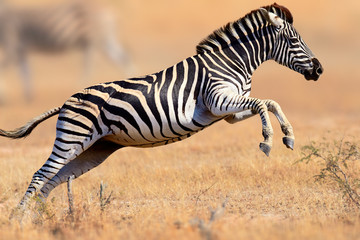
Lifespan
Zebras in the wild usually have a lifespan of 20 to 25 years. However, in captivity, where they are safe from predators and have consistent access to food, they can live as long as 30 years.
Reproduction and Lifecycle
Zebras have a gestation period of approximately 12 to 14 months, resulting in the birth of a single foal. These newborn foals are able to stand and walk within an hour of being born, which is essential for their survival against predators. The mother zebra nurses her foal for several months, during which the foal gradually begins to eat solid food. Young zebras typically remain with their mothers for at least a year before either joining other groups or forming their own herds.
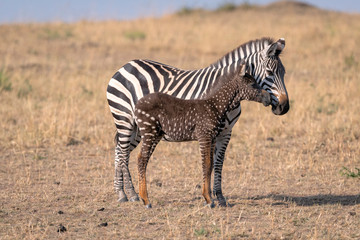
Predators
Zebras encounter a variety of predators, such as lions, hyenas, leopards, and crocodiles. Their main defense is their impressive speed, allowing them to run at 40-50 mph (64-80 km/h). They also use powerful kicks to deter threats. Additionally, their social structure enables them to remain vigilant against potential dangers.
Adaptations
Zebras have developed various adaptations to thrive in their natural habitat:
Striped Coat: This feature confuses predators and helps keep biting insects at bay.
Strong Legs: These allow zebras to run swiftly, aiding in their escape from threats.
Large Eyes and Ears: These adaptations enhance their vision and hearing, enabling them to spot dangers early.
Digestive System: Their unique digestive system allows them to process tough vegetation, which is particularly beneficial during dry seasons.
Conservation Status
Zebra species are facing different levels of threat:
Plains Zebra: Considered “Near Threatened” primarily due to habitat loss and hunting activities.
Mountain Zebra: Rated as “Vulnerable,” but conservation initiatives are helping to boost their population.
Grévy’s Zebra: Classified as “Endangered,” with fewer than 2,000 individuals left in the wild.
Conservation strategies include protecting habitats, implementing anti-poaching measures, and establishing breeding programs in reserves. It is crucial to preserve zebra populations to maintain the ecological balance of African savannas.
Zebras are among the most fascinating animals in Africa, symbolizing the continent’s wild beauty. Their resilience, strong social connections, and unique adaptations play a vital role in their ecosystems. With continued conservation efforts, zebras are expected to thrive on the African plains for many generations to come.
